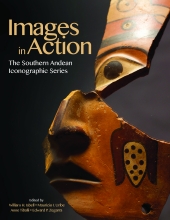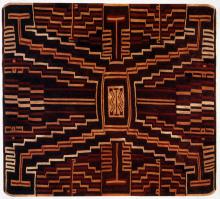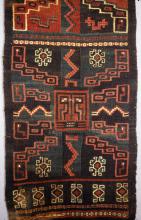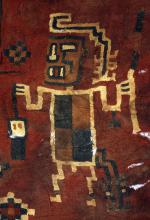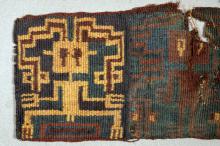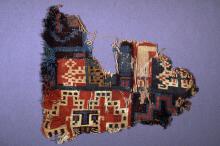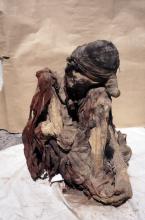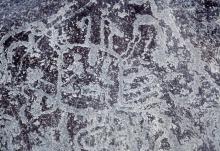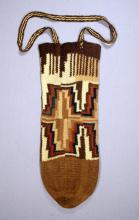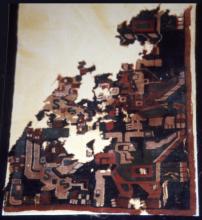Visual database
Siguas 1, Rayed Head Theme C, textile in discontinuous double interlocking warp and weft, both warp and weft in camelid fibers, dated cal. 176 BC to AD 134. Private collection.
Siguas 1, Rayed Head, detail of a band fragment in interlocking tapestry, warp in cotton and weft in camelid fibers, dated cal. 359 BC to AD 1. Private collection.
Siguas 1, man with mythic attributes represented in the Staff God pose, detail of a narrow textile. Private collection.
Siguas 1, man with mythic attributes holding a staff and a severed head hanging from a cord, detail of a tunic in discontinuous double interlocking warp and weft, both in camelid fibers. Private collection.
Siguas 1, a crouching woman and a standing man (implied) with mythic attributes. Fragment of a band from the site of Santa Ana, Sihuas Valley, in interlocking tapestry; warp (5/cm) and weft (42/cm) in camelid fibers. The dark brown warp yarns are triplet. Private collection.
Siguas 1, four partial representations of a crouching woman with two felines between her legs. The women have no other feline characteristics than whiskers, possibly a mouthmask. Textile fragment from Panarcana, lower Ocoña Valley, in interlocking tapestry; warp in cotton (6/cm) and weft in camelid fibers (30/cm). Private collection.
Siguas 1, mummy, INC Arequipa, rescued by the archaeologist Marko López at the site of Santa Ana, Sihuas Valley, department of Arequipa. Note the horn-like appendage, in this case folded and tied braids wrapped in a head cover. The Siguas 1 tunic was dated cal. 392 to 160 BC.
Siguas 1, Rayed Head, detail of a petroglyph at the site of Pisanay at Tin Tin, Sihuas Valley, department of Arequipa. Photo, July 15, 2006.
Siguas 1, typical elongated bag in looping using camelid fibers. The decoration of this type of bag is divided into three sections. The upper section has a vertical striping design that is occasionally intercalated by triangular step-designs. The midsection has superimposed bands of an ascending and descending step design in different colors with changes in color at the midsection of the top and bottom step. The bottom section may have small checkered crosses, a simple undulating step design, or no design at all. Private collection.
Provincial Pukara, fragment of a textile with winged Attendants found in the vicinity of La Ramada, Sihuas Valley, department of Arequipa. Readily recognizable are the Winged Snail Man, Bird A, and Winged Backward-looking Anthropomorph. Private collection. Photo of a photo, July 14, 2006.
